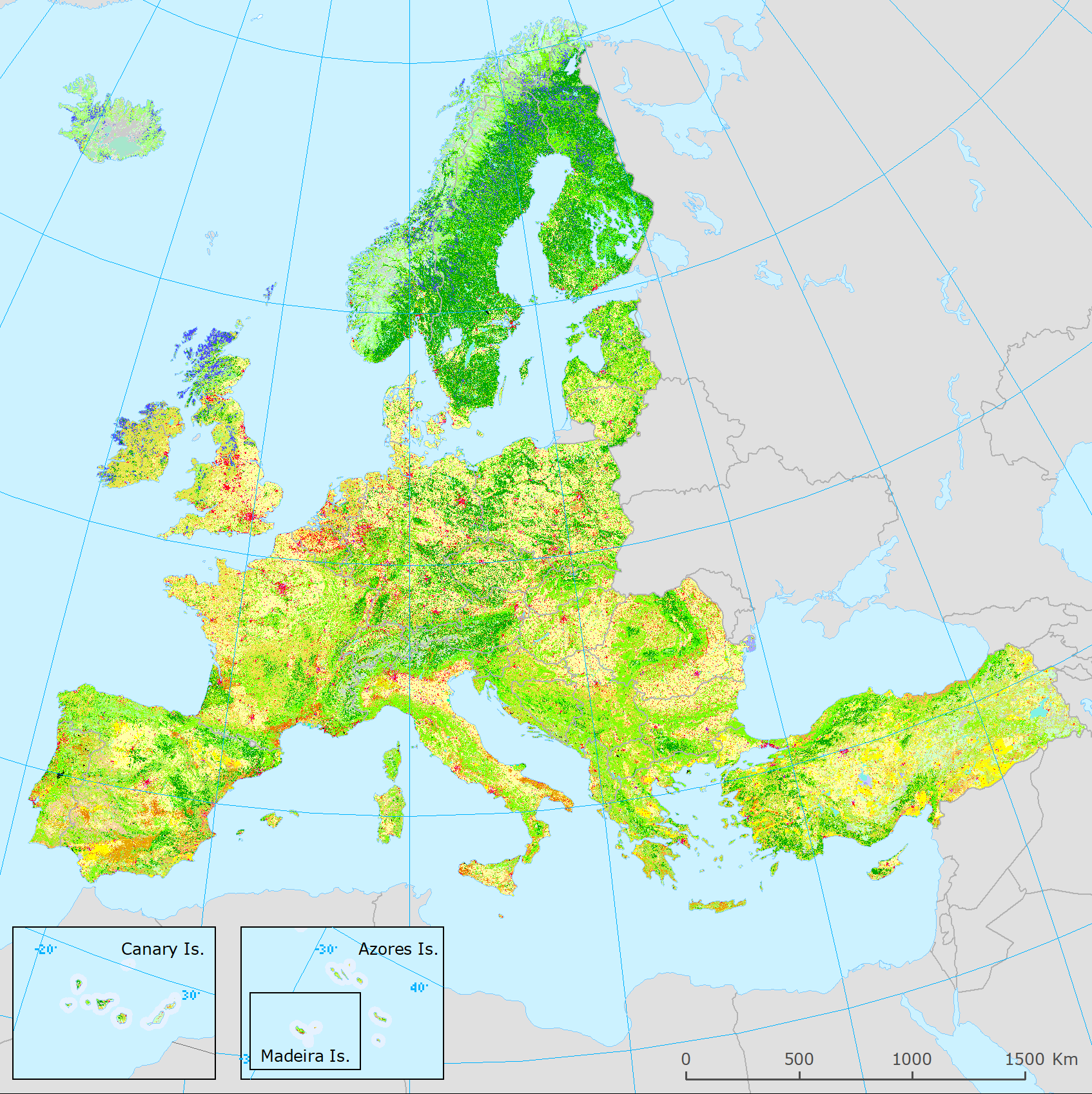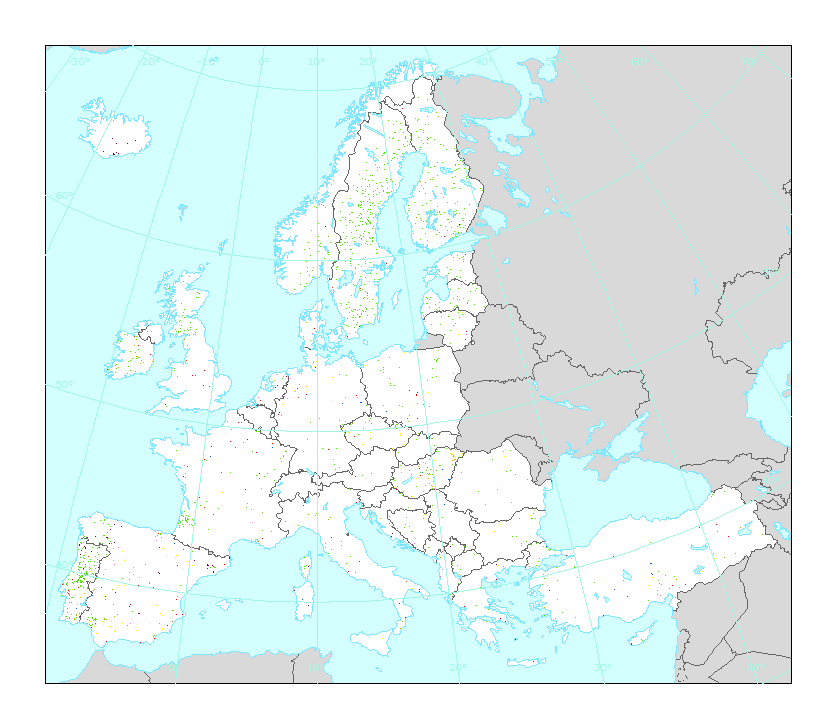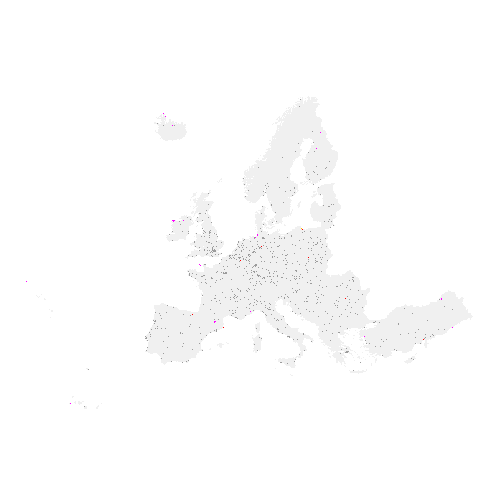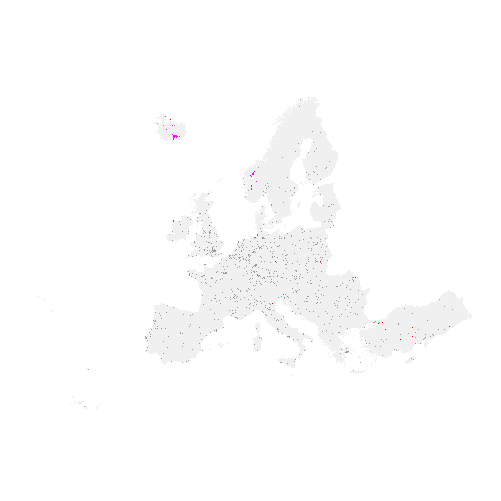IDP_topics_Land_use
Type of resources
Available actions
Topics
INSPIRE themes
Keywords
Contact for the resource
Provided by
Years
Formats
Representation types
Update frequencies
status
Resolution
-

The present 100m raster dataset is the 2018 CLC status layer modified for the purpose of consistent statistical analysis in the land cover change accounting system at EEA. CORINE Land Cover (CLC) data are produced from 1986 for European (EEA member or cooperating) countries. Altogether five mapping inventories were implemented in this period, producing five status layers (CLC1990, CLC2000, CLC2006, CLC2012, CLC2018) and four CLC-Change (CLCC) layers for the corresponding periods (1990-2000, 2000-2006, 2006-2012, 2012-2018). Pan-European CLC and CLCC data are available as vector and raster products. Due to the technical characteristics of CLC and CLCC data, the evolution in CLC update methodology and in quality of input data, time-series statistics derived directly from historical CLC data includes several inconsistencies. In order to create a statistically solid basis for CLC-based time series analysis, a harmonization methodology was elaborated.
-

The raster dataset describes land cover flows between 2012-2018. Land Cover Flows summarize and interpret the 44x43=1892 possible one-to-one changes between the 44 CORINE land cover classes. The changes are grouped to so called flows of land cover and are classified according to major land use processes. The nomenclature of flows is organized on 3 hierarchical levels. See lineage on the nomenclature. The classification of land cover flows results from the feasibility studies and subsequent revisions after discussion with experts in agri-environment and forestry. Basically, the classification of land cover flows distinguishes change between broad land cover classes and changes internal to these classes. Analysis of land cover flows supplies a rapid vision of land use change processes taking place and they shed light on the drivers of various land use change processes such as e.g. urbanization. The geographic coverage of the dataset is EEA39 region.
-

The raster dataset describes land cover flows between 2000-2006. Land Cover Flows summarize and interpret the 44x43=1892 possible one-to-one changes between the 44 CORINE land cover classes. The changes are grouped to so called flows of land cover and are classified according to major land use processes. The nomenclature of flows is organized on 3 hierarchical levels. See lineage on the nomenclature. The classification of land cover flows results from the feasibility studies and subsequent revisions after discussion with experts in agri-environment and forestry. Basically, the classification of land cover flows distinguishes change between broad land cover classes and changes internal to these classes. Analysis of land cover flows supplies a rapid vision of land use change processes taking place and they shed light on the drivers of various land use change processes such as e.g. urbanization. The geographic coverage of the dataset is EEA39 region.
-

The main high resolution grassland product is the Grassland layer, a grassland/non-grassland mask for the EEA39 area. This grassy and non-woody vegetation baseline product includes all kinds of grasslands: managed grassland, semi-natural grassland and natural grassy vegetation. It is a binary status layer mapping grassland and all non-grassland areas in 20m and (aggregated) 100m pixel size. Two additional (expert) products complete the high resolution grassland product: the Ploughing Indicator (PLOUGH) and the Grassland Vegetation Probability Index (GRAVPI). While the PLOUGH concentrates on historic land cover features with the aim to indicate ploughing activities in preceding years, the GRAVPI provides a measure of classification reliability. GRAVPI is a 20m pixel size product, mapping on a range of 1-100 the class probability. PLOUGH is a 20m pixel size additional product, mapping from 1-6 the number of years since the last indication of ploughing. The production of the high resolution grassland layers was coordinated by the European Environment Agency (EEA) in the frame of the EU Copernicus programme.
-

The present 100m raster dataset is the 2000 CLC status layer modified for the purpose of consistent statistical analysis in the land cover change accounting system at EEA. CORINE Land Cover (CLC) data are produced from 1986 for European (EEA member or cooperating) countries. Altogether five mapping inventories were implemented in this period, producing five status layers (CLC1990, CLC2000, CLC2006, CLC2012, CLC2018) and four CLC-Change (CLCC) layers for the corresponding periods (1990-2000, 2000-2006, 2006-2012, 2012-2018). Pan-European CLC and CLCC data are available as vector and raster products. Due to the technical characteristics of CLC and CLCC data, the evolution in CLC update methodology and in quality of input data, time-series statistics derived directly from historical CLC data includes several inconsistencies. In order to create a statistically solid basis for CLC-based time series analysis, a harmonization methodology was elaborated.
-

The raster dataset describes land cover flows between 2006-2012. Land Cover Flows summarize and interpret the 44x43=1892 possible one-to-one changes between the 44 CORINE land cover classes. The changes are grouped to so called flows of land cover and are classified according to major land use processes. The nomenclature of flows is organized on 3 hierarchical levels. See lineage on the nomenclature. The classification of land cover flows results from the feasibility studies and subsequent revisions after discussion with experts in agri-environment and forestry. Basically, the classification of land cover flows distinguishes change between broad land cover classes and changes internal to these classes. Analysis of land cover flows supplies a rapid vision of land use change processes taking place and they shed light on the drivers of various land use change processes such as e.g. urbanization. The geographic coverage of the dataset is EEA39 region.
-

The high resolution imperviousness products capture the percentage and change of soil sealing. Built-up areas are characterized by the substitution of the original (semi-) natural land cover or water surface with an artificial, often impervious cover. These artificial surfaces are usually maintained over long periods of time. A series of high resolution imperviousness datasets (for the 2006, 2009, 2012 and 2015 reference years) with all artificially sealed areas was produced using automatic derivation based on calibrated Normalized Difference Vegetation Index (NDVI). This series of imperviousness layers constitutes the main status layers. They are per-pixel estimates of impermeable cover of soil (soil sealing) and are mapped as the degree of imperviousness (0-100%). Imperviousness change layers were produced as a difference between the reference years (2006-2009, 2009-2012, 2012-2015 and additionally 2006-2012, to fully match the CORINE Land Cover production cycle) and are presented 1) as degree of imperviousness change (-100% -- +100%), in 20m and 100m pixel size, and 2) a classified (categorical) 20m change product.
-

The present 100m raster dataset is the 2012 CLC status layer modified for the purpose of consistent statistical analysis in the land cover change accounting system at EEA. CORINE Land Cover (CLC) data are produced from 1986 for European (EEA member or cooperating) countries. Altogether five mapping inventories were implemented in this period, producing five status layers (CLC1990, CLC2000, CLC2006, CLC2012, CLC2018) and four CLC-Change (CLCC) layers for the corresponding periods (1990-2000, 2000-2006, 2006-2012, 2012-2018). Pan-European CLC and CLCC data are available as vector and raster products. Due to the technical characteristics of CLC and CLCC data, the evolution in CLC update methodology and in quality of input data, time-series statistics derived directly from historical CLC data includes several inconsistencies. In order to create a statistically solid basis for CLC-based time series analysis, a harmonization methodology was elaborated.
-

The raster dataset describes land cover flows between 2000-2018. The Land Cover Flows summarize and interpret the 44x43=1892 possible one-to-one changes between the 44 CORINE land cover classes. The changes are grouped in so called flows of land cover and are classified according to major land use processes. The nomenclature of flows is organized on 3 hierarchical levels. See lineage on the nomenclature. The classification of land cover flows results from the feasibility studies and subsequent revisions after discussion with experts in agri-environment and forestry. Basically, the classification of land cover flows distinguishes change between broad land cover classes and changes internal to these classes. Analysis of land cover flows supplies a rapid vision of land use change processes taking place and they shed light on the drivers of various land use change processes such as e.g. urbanization. The geographic coverage of the dataset is EEA39 region.
-

The high resolution imperviousness products capture the percentage and change of soil sealing. Built-up areas are characterized by the substitution of the original (semi-) natural land cover or water surface with an artificial, often impervious cover. These artificial surfaces are usually maintained over long periods of time. A series of high resolution imperviousness datasets (for the 2006, 2009, 2012 and 2015 reference years) with all artificially sealed areas was produced using automatic derivation based on calibrated Normalized Difference Vegetation Index (NDVI). This series of imperviousness layers constitutes the main status layers. They are per-pixel estimates of impermeable cover of soil (soil sealing) and are mapped as the degree of imperviousness (0-100%). Imperviousness change layers were produced as a difference between the reference years (2006-2009, 2009-2012, 2012-2015 and additionally 2006-2012, to fully match the CORINE Land Cover production cycle) and are presented 1) as degree of imperviousness change (-100% -- +100%), in 20m and 100m pixel size, and 2) a classified (categorical) 20m change product.
 RUC Geo-Data catalogue
RUC Geo-Data catalogue